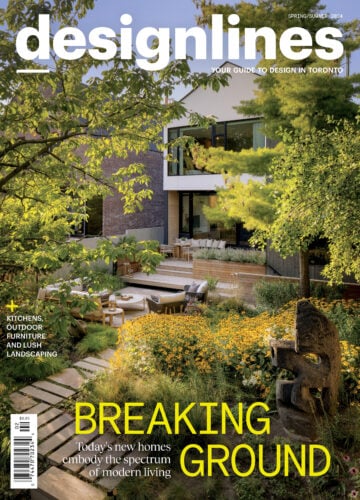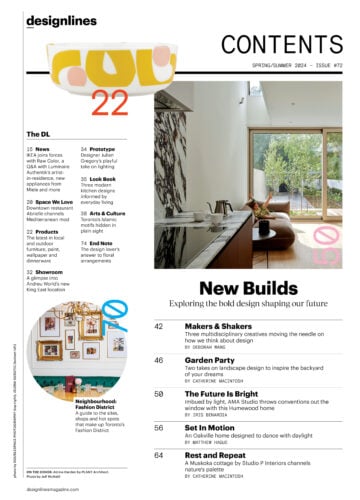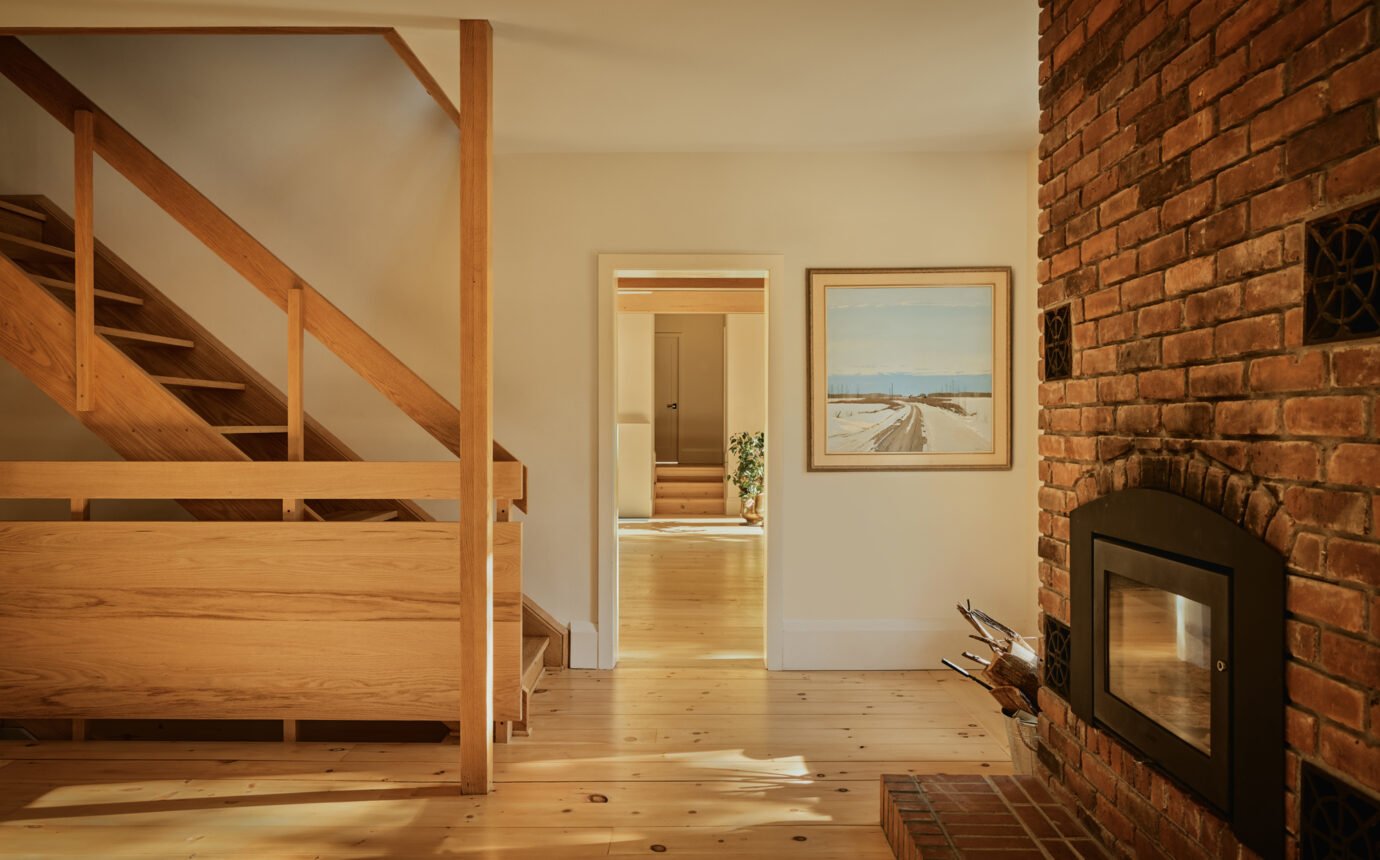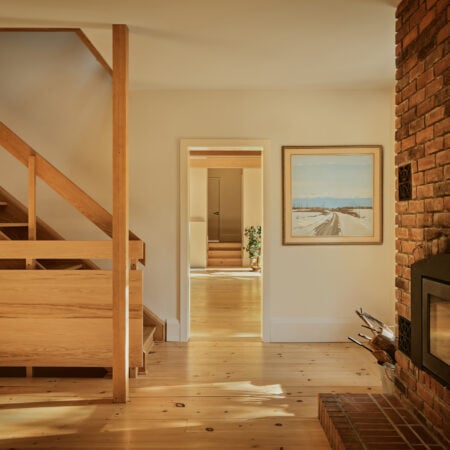Taberna Lx Brings Lisbon’s Warmth (and Wit) to Little Portugal
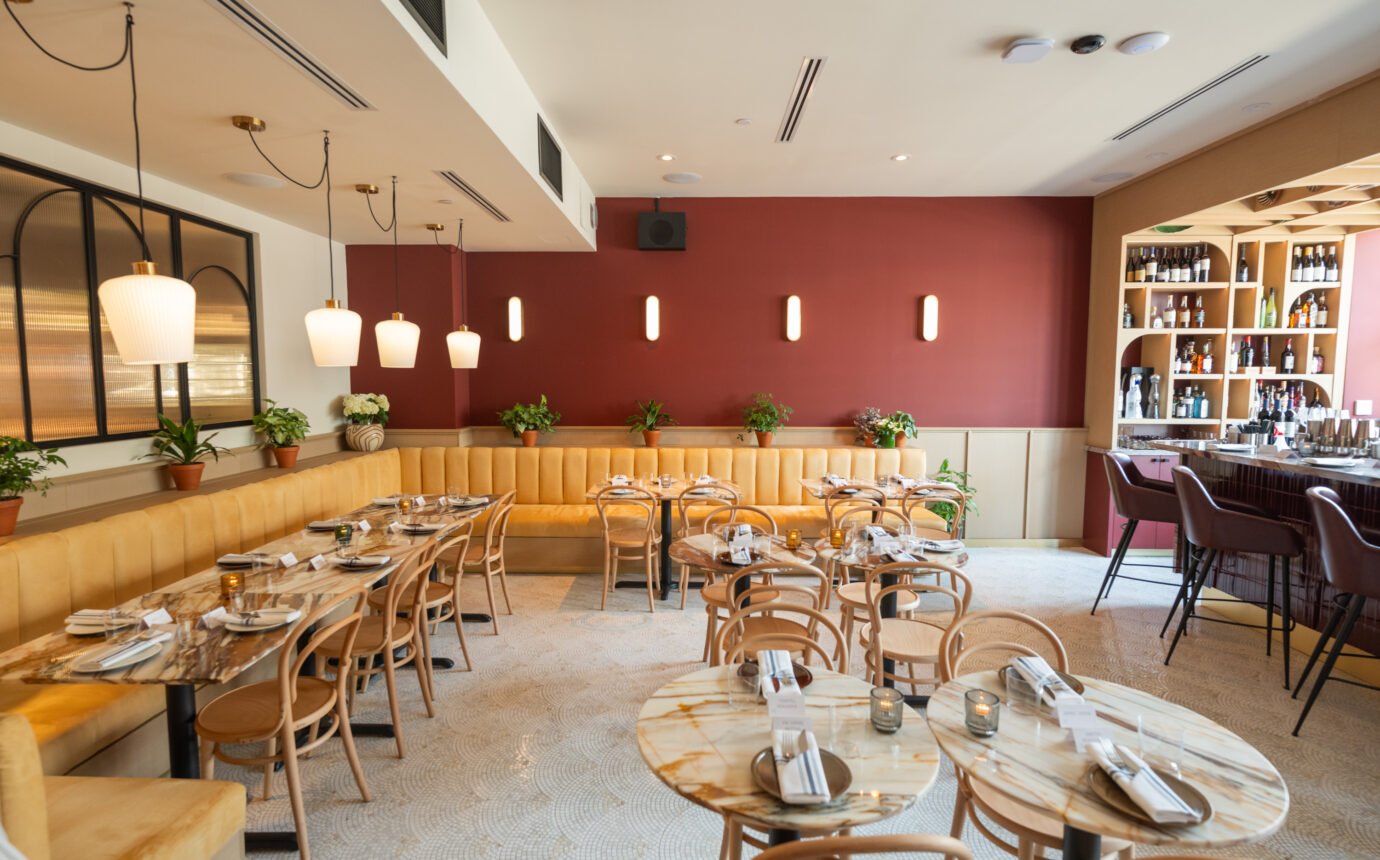
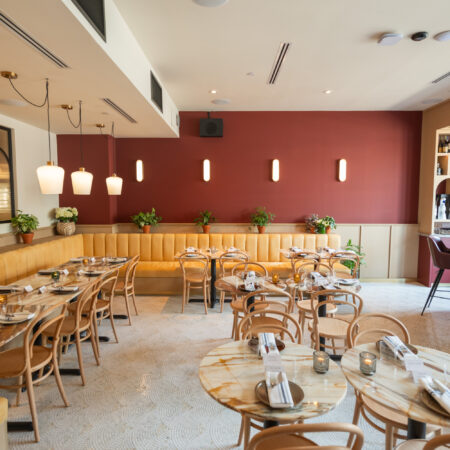
In Dundas West’s dining thicket, a new room hums with tiled glamour, Azorean wine and a quietly confident take on Portuguese craft
There’s a particular glow to Taberna Lx just before service: light catching the ripples of hand-painted tile, brass glancing off rounded shelves, the marble-veined bar warming to amber. The room—ochre banquettes, bentwood chairs, a deep wine-red wall—feels at once new and familiar. That duality is the point.
Owner Kelly Amaral, whose family helped seed Little Portugal decades ago, wanted a place that honoured her roots without playing to stereotype. She tapped Lisbon-based architect, artist and creative director Joana Astolfi of Studio Astolfi to translate that ambition. “The base is Portugal,” Astolfi says, “but with a twist.”
A hybrid of article elegance and craft
The studio is known for its cross-disciplinary approach—architecture and interiors infused with scenography and object-making—and Taberna Lx wears that signature lightly. The ground floor sets the tone with a crisp, cabinet-like millwork: arched cubbies climb the back bar and continue overhead in a gridded canopy where playful ceramics nestle like treasures. Astolfi calls these “cabinets of curiosities,” a recurring motif that turns objects into storytellers.
Material choices cue Lisbon without slipping into pastiche. Both bars are clad in tiles from storied Portuguese manufacturer Viúva Lamego. Downstairs, the palette leans to deep red—think aged vinho tinto—while upstairs skews green, a lift echoed in the glossy, reed-like tile facing along the bar. Underfoot, mosaic floors lay down a subtle, graphic rhythm; on the terrace, terracotta nods to the country’s south. Brass trim and fluted glass reinforce a thread of 1920s elegance that Astolfi wove through the project—a sleek counterpoint to the tactile craft.
Designing at a continent’s remove added friction in the best way. Many finishes were specified in Lisbon, then sourced in Toronto to keep shipping sane. Stone for the bar tops was chosen locally; certain patterns were adapted to suit availability. “It’s the reality of working abroad,” Astolfi says. “But the narrative holds.” She still hopes to layer in more Portuguese craft pieces—textiles, ceramics, basketry—as the room patinas.
A mural that frames the journey
Climb to the second level and a 26-foot mural by Canadian artist Madison van Rijn reveals itself like a travelogue. Developed in collaboration with Graham’s Port, the artwork becomes a kind of north star for the terrace—a sun-lit perch that extends the dining room into the neighbourhood.
If the interior is Portugal plus, the food follows suit. Chef Jonathan Poon reimagines classics—cod in clever disguises, croquettes, custard tarts—through today’s Lisbon lens, where Atlantic traditions mingle with global influence. It’s not about strict authenticity; it’s about feeling authentic now. Bar manager Isabo Leblanc brings the same restraint-meets-boldness to cocktails, and Krysta Oben (Grape Witches) curates an all-Portuguese list with volcanic wines from Pico as a distinctive throughline. The effect is cohesive: you taste what you see.
Why this matters for Toronto
Little Portugal has long deserved a room like this—serious about design, serious about food, light on cliché. By hiring Portuguese designers to express Portuguese culture in Toronto, Amaral chose the more interesting path: authenticity by authorship, rather than by theme. Astolfi’s team designed from Lisbon, visited Dundas West to absorb the neighbourhood, then tuned the project with local fabricators. The result is a hybrid Toronto-Lisbon vernacular—rooted, but not stuck.
Astolfi describes her practice as “working from the inside out.” At Taberna Lx, that reads in the details from buttery channel-tufted banquettes that soften the room’s geometry to a glass-block stair landing that diffuses daylight like mist. “Each project is a different story,” she says. “We build the narrative through materials, textures and colour—layer by layer—until the room speaks.”
And then there’s the mood, the hardest thing to design. Between the soundtrack, the glow of ribbed glassware on stone and the small rituals of service, the room finds that sweet spot where dinner edges toward celebration. “The base is Portugal, but with a twist,” Astolfi said. “I love the tension between rooted craft and a contemporary feel—those two lines running in parallel.”
As she looks outward—this is the studio’s first Canadian commission—the Toronto debut lands like a calling card. For the neighbourhood, it’s a homecoming with fresh eyes. For the city, it’s a reminder that craft and contemporaneity can share the table—and when they do, everyone stays for one more glass.
~ cover photo by George Pimentel.
